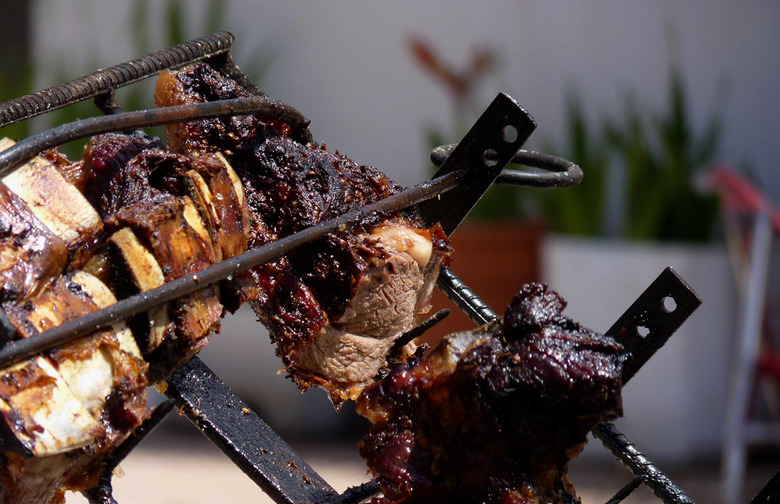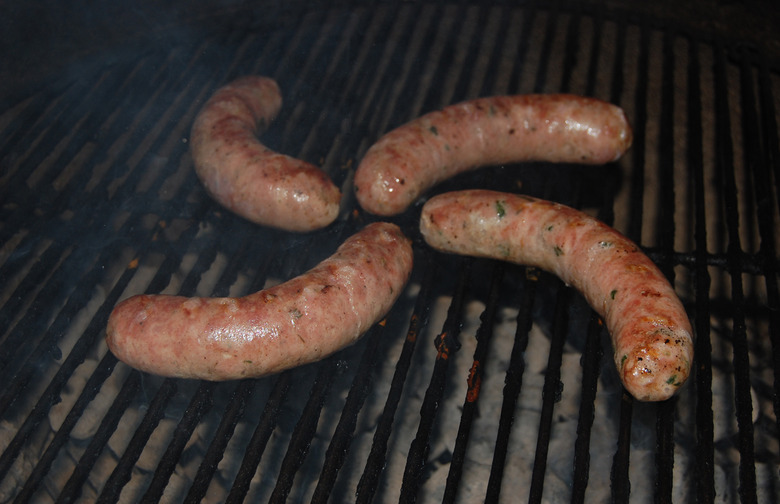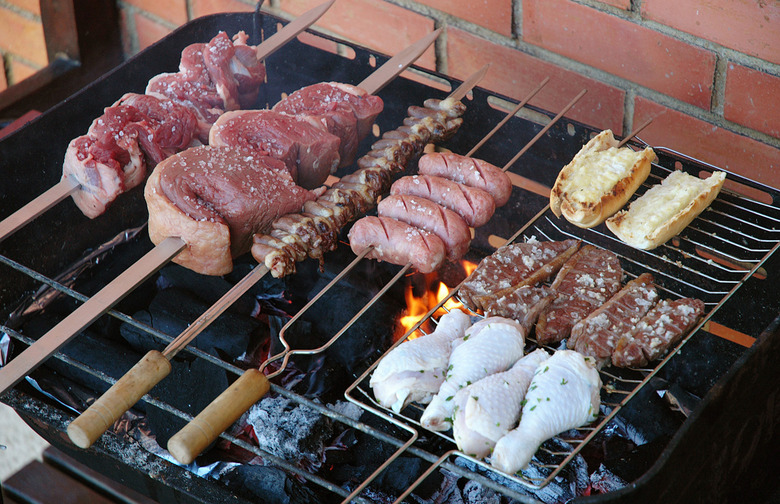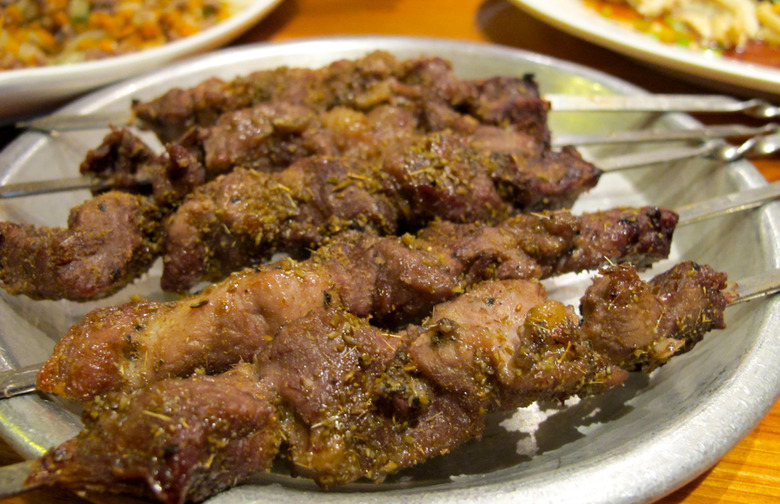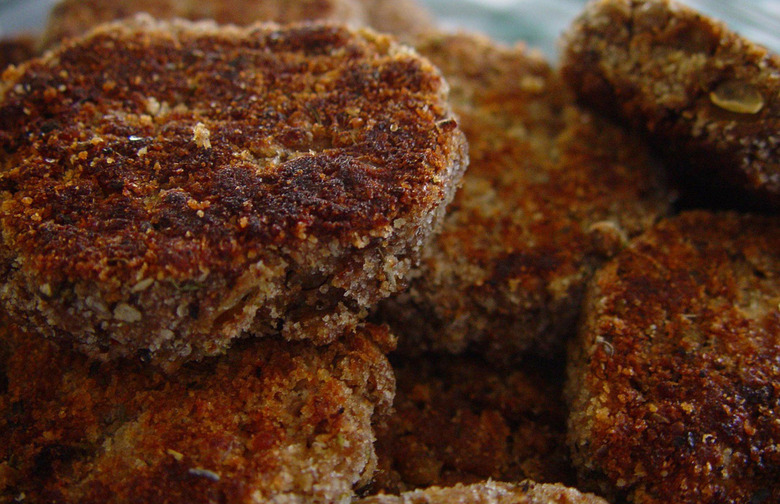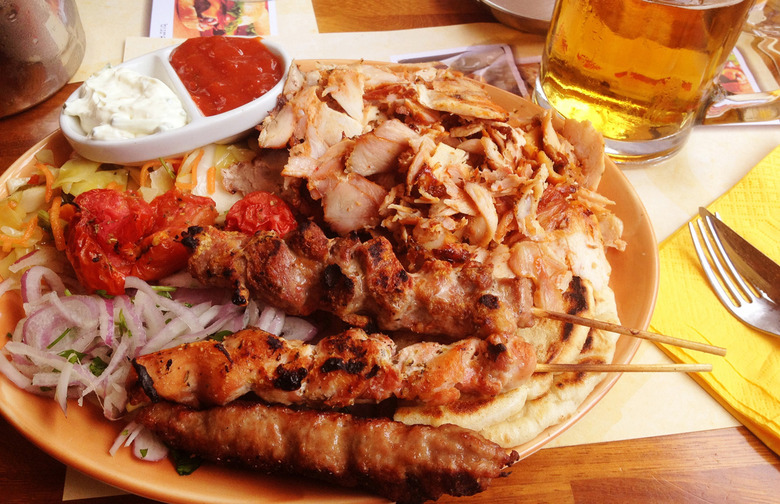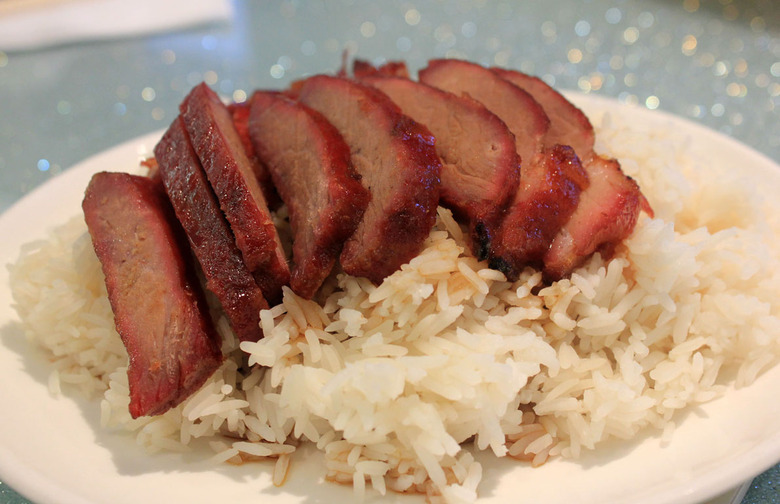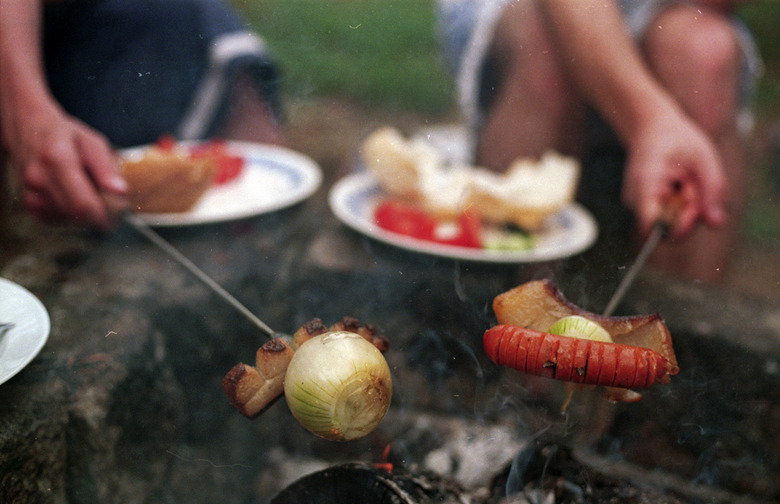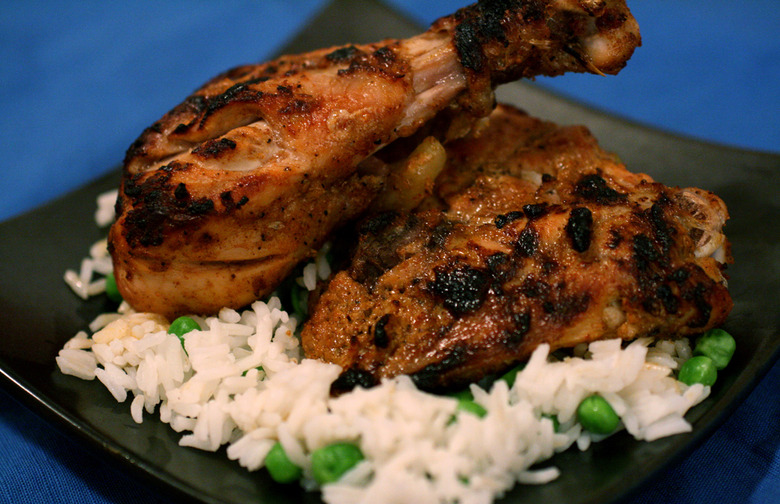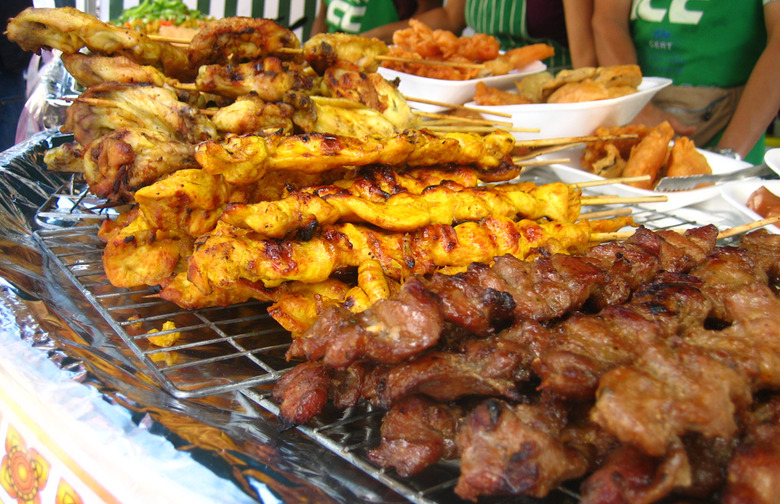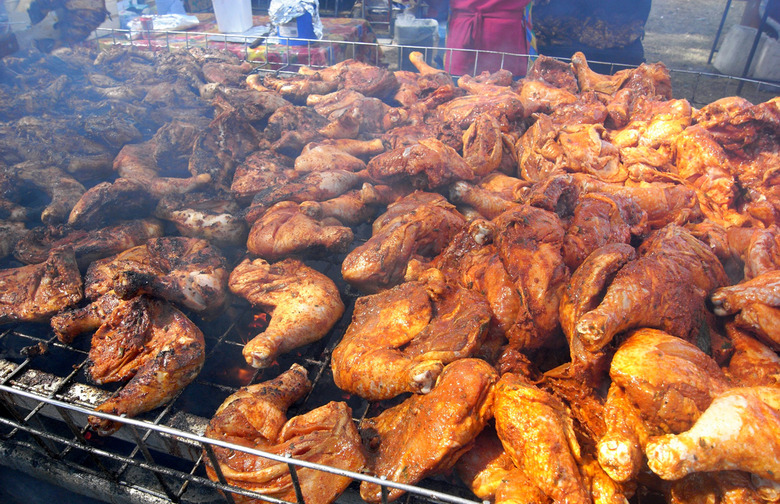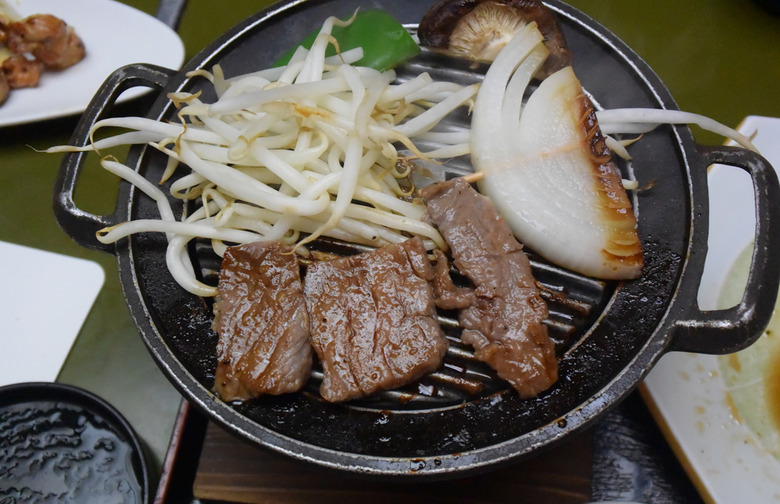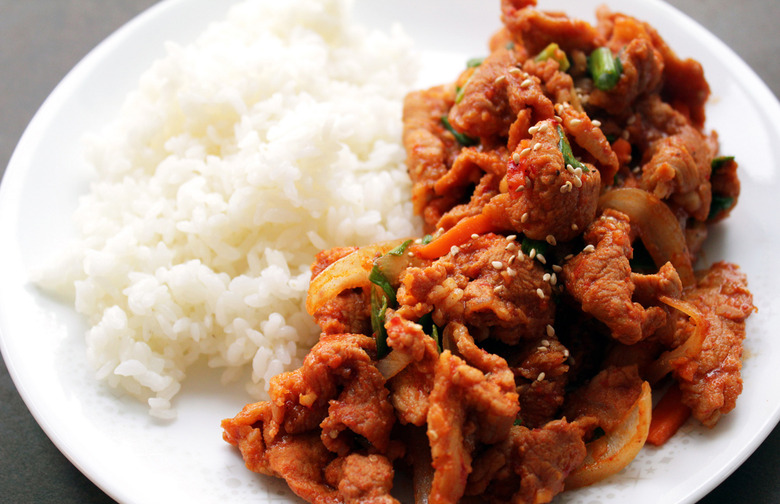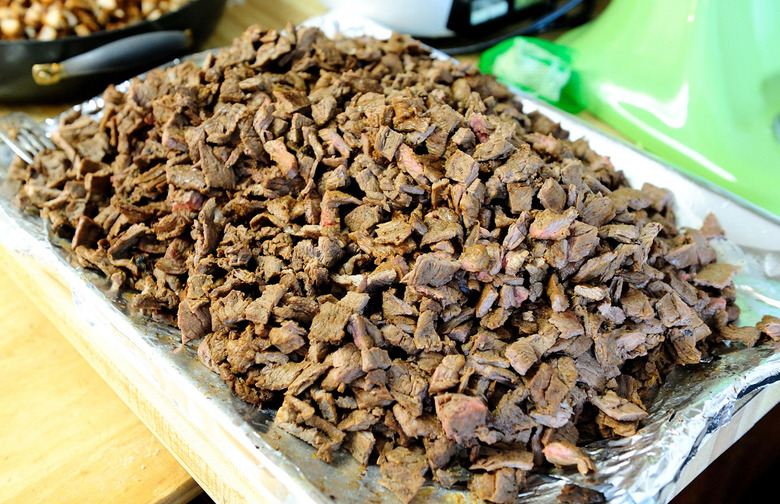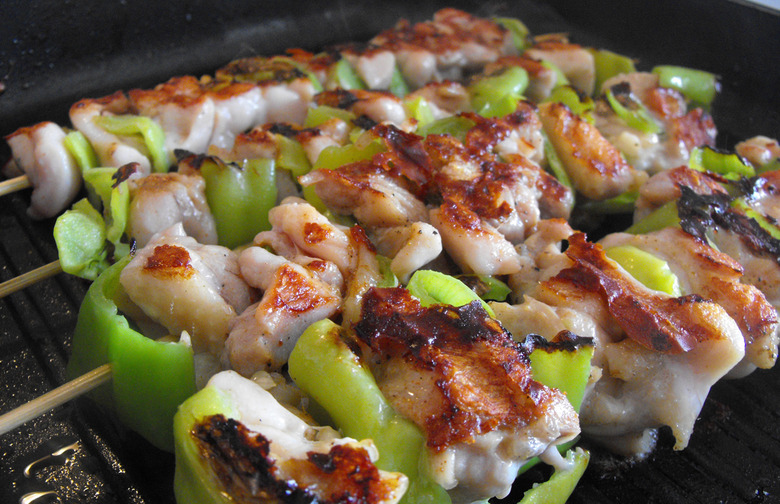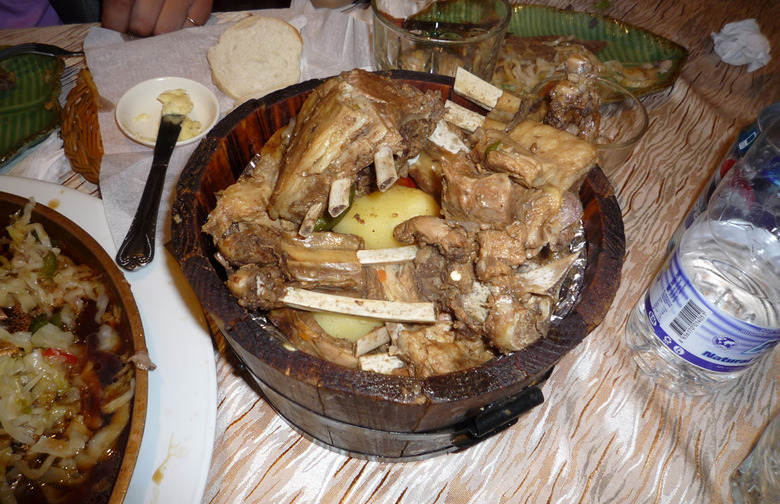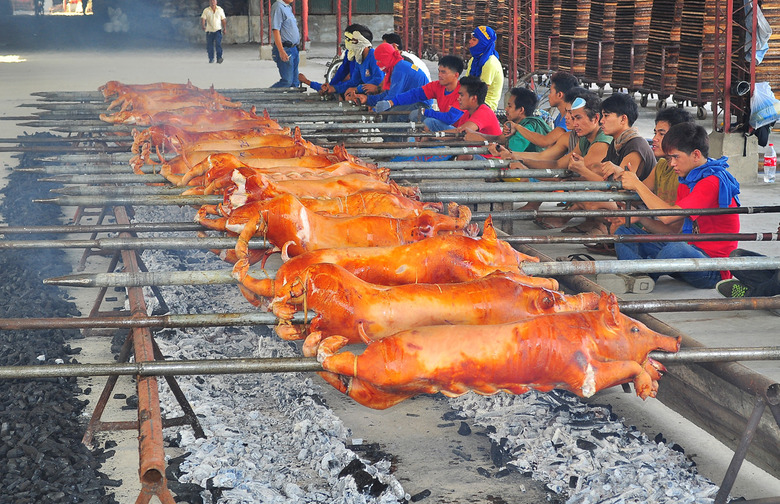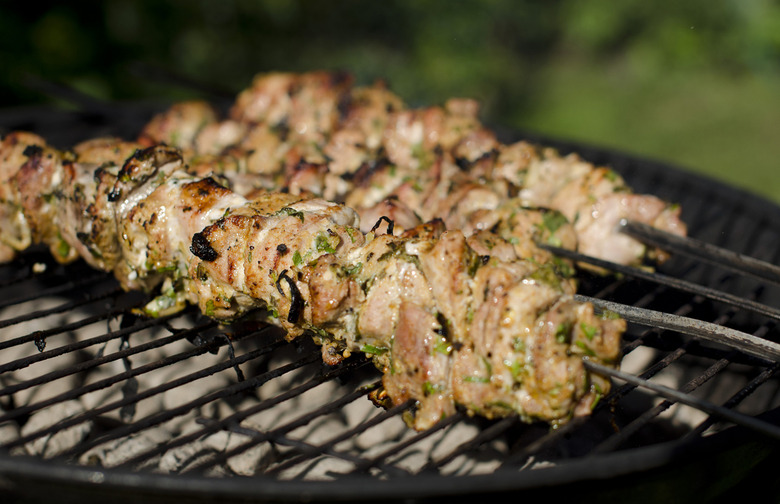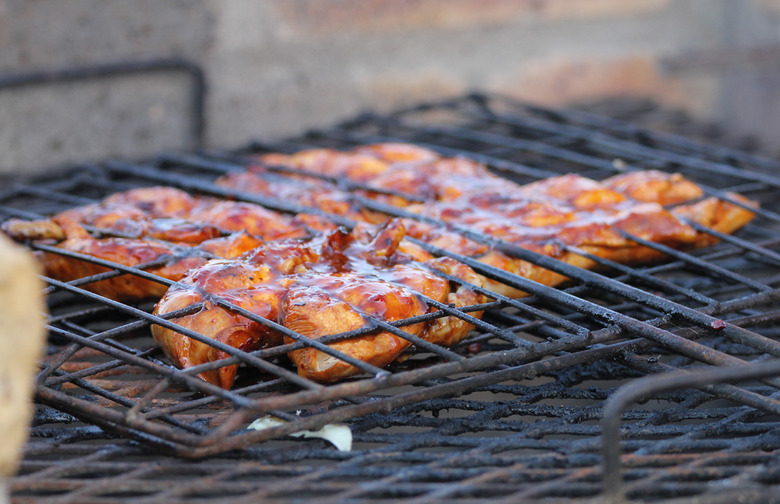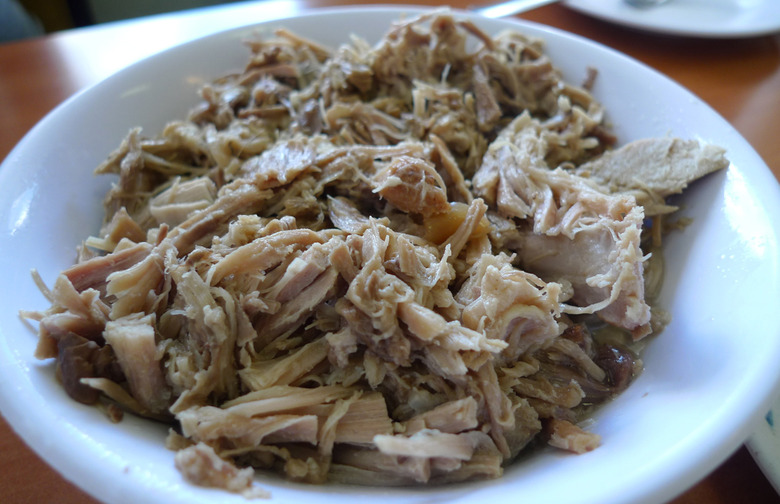What Barbecue Looks (And Tastes) Like In 20 Countries (Slideshow)
Asado, like barbecue, refers to the cooking technique, the type of food produced, and the social event associated with it. The chef (an "asador" or "parrillero") doesn't marinate the meat — generally beef, embutidos (cured, dry sausages), and offal (organs and entrails) — prior to grilling, but only uses salt, which is applied before or during the process. The meats are then cooked over charcoal, often made from native trees without strong-smelling resins. It can be cooked al asador (splayed across a fire as a whole carcass) or a la parrilla (cooked in pieces over a grill). Often, the meat is not heated directly over the coals as to avoid an overly smoky flavor, and thus usually takes a couple hours to fully cook. In addition to Argentina, this cooking style is especially popular in Chile, Paraguay, Uruguay, and parts of Brazil.
Australia — Sausage Sizzle
Hold the "shrimp on the barbie" jokes for a minute, as we're going to discuss another type of Aussie barbecue: the sausage sizzle. Sizzles often take place at charity fundraising or other community events in Australia and New Zealand, and the main dish, obviously, is sausage — also called "snags." The most common toppings are grilled onions and condiments like ketchup or barbecue sauce, while the meat is served on a slice of white bread (you stay classy, Australia). Bunnings Warehouse (the largest hardware chain in Australia) and The Warehouse (a retail department store chain) are famous for their frequent sausage sizzle events.
Click here for 5 "Only in Australia" facts that might surprise you.
Brazil — Churrasco
Brazilian churrasco uses a variety of meats like beef, pork, chicken, and sausage that are cooked over a large "churrasqueira" charcoal barbecue grill. This term can also refer to the chef, and a similar term, "churrascaria," also refers to a steakhouse or other barbecue restaurant. The barbecues themselves usually have supports for spits or skewers, and often have nothing separating the meat and the embers. Beef is the most common meat prepared, and it is usually marinated in lime, lemon, or other juices mixed with garlic for several hours before getting seasoned with salt.
China — Chuanr
In China, "chuan" or "chuanr" refers to small pieces of meat roasted on skewers over charcoal, which originated in the Xinjiang province in northwestern China, where there's a large population of Chinese Muslims. Due to religious restrictions, chuan was traditionally made with lamb, but now chicken, beef, seafood, and even pork are commonly used, and are brushed or sprinkled with cumin seeds, dried red pepper flakes, salt, black pepper, and sesame seeds or sesame oil. Chuan is often spicy, but a sweeter version made with red bean paste is also usually an option. This type of barbecue is often found as a street food, especially in popular tourist areas.
Click here for 27 iconic street foods that every world traveler should try.
Germany — Grillen
When summertime hits, Germans break out their charcoal and gas grills to cook up bratwurst, sausages, steaks (especially marinated pork shoulder steak), minced meat dumplings called frikadellen, and chicken — with regional delicacies that range from duck to trout to eel. Also, despite hamburger being named after a city in Germany, don't expect to find any at German barbecues. On the other hand, you can expect to find German barbecue in Scandinavia, because their local version is almost identical to the cuisine of their neighbors to the south, and even has the same name. One notable difference, however, is the addition of juniper berries to meats served in Scandinavia.
Greece — Souvlaki
Souvlaki is Greece's version of fast food that's been around for thousands of years. In fact, excavations in Santorini uncovered stone sets of barbecue skewers used around the seventeenth century B.C.E. To prepare the dish, the meat (commonly pork, but also chicken and lamb) is cut into one-inch cubes, marinated overnight in lemon juice and olive oil with herbs and spices, and skewered on wooden sticks before getting broiled over charcoal and seasoned generously with salt and pepper. It is then served directly on the skewer or inside a pita sandwich — often with the addition of a yogurt-based tzatziki sauce.
Hong Kong — Char Siu
Although located just off the mainland, Hong Kong's barbecue differs quite a bit from thjat of China itself. Char siu, the Cantonese version of barbecue, is sweeter and more savory than chuan, due to the addition of five-spice powder, honey, hoisin sauce, soy sauce, and sometimes red food coloring. The meat (generally thin strips of boneless pork loin, belly, butt, fat, or neck) is skewered on long metal forks instead of sticks, and is placed in a covered oven or over an open flame often by the person who intends to eat it, making the experience more akin to hot pot or fondue.
Hungary — Szalonnasütés
Beef gets a lot of love on this list, but in Hungary there's a whole separate name for barbecuing bacon, and it's called szalonnasütés. Don't worry about any fancy equipment either, as the only thing required (other than a thick hunk of bacon) is an onion, some bread, a stick, and a fire. Think of it like roasting marshmallows, except with half an onion and a piece of bacon on the end. As the stick is held over the fire and turned, the drippings are often collected in the bread as a snack during the cooking process. The bread can later be used to house the onion and bacon once it's done, which altogether makes for a quick, simple, and delicious form of barbecue.
India — Tandoor
In India (and also in Pakistan and Bangladesh), the word tandoor refers to the cylindrical clay or metal oven used to cook meats, breads, vegetables, and potatoes at extremely high temperatures — sometimes up to 900 degrees Fahrenheit! The tandoor uses live-fire, radiant heat cooking, hot-air, convection, and smoking (via the juices that drip on the charcoal inside), and often remains lit and maintained for long periods of time. One of the most famous dishes prepared in this fashion is tandoori chicken, which is marinated in yogurt seasoned with garlic, ginger, cumin, cayenne pepper, and other spices. The chicken picks up a red color, or a yellow-orange one if turmeric is used.
Click here for a tandoori chicken recipe using only 3 ingredients.
Indonesia — Satay
Satay originated in Indonesia, but it's also quite popular in Thailand, Malaysia, Singapore, and the Philippines. The dish consists of seasoned, skewered, and grilled meat or other protein served with sauces, with a number of variations in each part. The seasonings vary greatly by the country of origin, the skewers can be made from coconut palm frond or bamboo; the meats include sliced or diced chicken, goat, mutton, beef, pork, fish, or tofu; and the most popular sauce is a peanut-based dip made with ginger, garlic, sugar, salt, chiles, and peanuts, of course.
Click here for a collection of our best chicken satay recipes.
Jamaica — Jerk
Jerk chicken is the most famous food from Jamaica, and consists of chicken or pork dry-rubbed or wet marinated with a hot, spicy mixture known as Jamaican jerk spice (mainly allspice and Scotch bonnet peppers with cloves, cinnamon, scallions, nutmeg, thyme, garlic, brown sugar, ginger, and salt as possible additions too). In addition to the cuisine type and spices, "jerk" also refers to the name of the cooking style in which small holes are poked in the meat (which, unlike a lot of barbecue around the world, is cooked and served in large pieces) for maximum flavor absorption. Traditionally, the best way to cook jerk is in a charcoal-filled oil barrel or drum that has been halved and has had hinges attached in order to allow the apparatus to be opened and closed. Holes are drilled to allow some smoke ventilation.
Japan —Yakiniku
Meaning "grilled meat," yakiniku was originally used in Japan to refer to western or otherwise foreign barbecue, but eventually came to classify a Japanese style of cooking (with Korean influences) where bite-sized meat (usually beef, pork, or offal) and vegetable pieces are prepared over gridirons and griddles and dipped in sauces (known as "tare") before being eaten. The most common tare is made with Japanese soy sauce, sake, mirin, sugar, garlic, fruit juice, and sesame. August 29 is Yakiniku Day in Japan, since the date in Japanese sounds very similar to yakiniku.
Korea — Bulgogi
Bulgogi is probably hotter than any other type of barbecue around right now, and we're not referring to its temperature or spiciness. It has recently become trendy for people all over the world to seek out one of their local (and constantly expanding) Korean barbecue joints to have a "gogi gui" meat roast and prepare and cook a selection of thinly-sliced meats themselves, right at their own table, on a gas or charcoal grill built into the center. The most popular meat type is beef sirloin or tenderloin, which is often marinated beforehand in soy sauce, sugar, sesame oil, garlic, pepper, ginger, onions, and other ingredients. The meat is then wrapped in lettuce or another leafy vegetable, dabbed with a spicy paste called ssamjang, and enjoyed.
Click here for a chicken bulgogi recipe, plus 14 other easy chicken dinner recipes.
Mexico — Carne Asada
Carne asada is beef (usually skirt, flank, or flap steak) grilled and served as slices. The meat is generally seared on the grill to add a charred flavor, and other flavors are utilized via spice rubs of salt, lemon, lime, pepper, garlic, or even beer. The meat is then eaten as a main dish or as part of a burrito, taco, gordita, quesadilla, or plate of nachos. As is the case in numerous other countries, the term for the meat and the social gathering associated with cooking it are one and the same.
Middle East — Kebab
We may not be geography experts or cartographers, but we're aware that "Middle East" is not a country — but how else can you pinpoint the disputed origin of kebab, which is now ubiquitous in the region and widespread throughout Europe and the rest of the world as well? The foods and spices involved can vary a lot from country to country, but a kebab will feature pieces of meat, fish, and vegetable are either roasted or grilled before getting served on a skewer (as shish kebab), over rice, in a pita, or in a sandwich or wrap. The later examples are usually referred to as "döner kebab," at least in Turkey.
Mongolia — Khorkhog
Although the term "Mongolian barbecue" is somewhat familiar to most people, many restaurants that serve this cuisine are actually preparing a Taiwanese dish of thinly-sliced meats quickly cooked over a flat circular metal surface. Authentic Mongolian barbecue (prepared in the countryside, and not in a restaurant), however, would actually include khorkhog, which is a meat dish cooked inside a container of hot stones and water that is heated from the outside. The medium-sized pieces of meat are almost always lamb (but goat can be substituted), and are combined with carrots, cabbage, or potatoes in a stew with salt and other spices. Before covering the mixture, a steam bubble is created inside the jug to facilitate the cooking. Sixty to 90 minutes later, the khorkhog is ready to eat. Interestingly, in addition to handing out the meat, the cook usually passes around the hot stones for good luck.
Philippines — Lechon
In the Philippines, lechon is so common that it would be unusual not to see it at any sort of special occasion. Prepared similarly to a meal in Caribbean countries (with the same word and pronunciation), lechon is a whole hog slow-roasted or grilled over a charcoal fire after the organs have been removed and the animal is placed on a stick or rod. Prior to cooking, the pig is also rubbed with soy sauce, salt, and pepper on the outside, and salt and pepper on the inside, which is often stuffed with lemongrass, leeks, garlic, apples, onions, or other seasonings and sides as well. The rotisserie-style meal is the national dish of both the Philippines and Puerto Rico.
Russia — Shashlik
The Russian word shashlik means "skewered meat," and the dish is made of lamb, pork, chicken, or beef (depending on preference and religious limitations) marinated in vinegar or lemon juice, which is sometimes combined on the sticks with fat or vegetables like bell pepper, onion, mushroom, and tomato. Although listed on some restaurant menus, shashlik is more often seen as a variety of street meat cooked over wood, charcoal, or coal grills. Shashlik is also a very popular dish at social gatherings and events of all types.
South Africa — Braai
Although convenience has made charcoal, briquettes, and gas grills more popular in recent years, traditional South African braai (barbecue) is only cooked over wood embers. However, from there, braai can vary quite a bit. The meats cooked range from steak, chicken, pork, lamb chops, and sausages to mutton skewers, ribs, and seafood. Although skewered food can be placed on the grill, sticks are not necessary, as the barbecues already have metal or mesh over the top so meat can be placed directly on it. Braai is so popular in South Africa that the nation celebrates the dish every year on September 24, which is also its Heritage Day.
United States — Kalua
You didn't think we'd leave the good ol' U.S. of A. off the list completely, did you? Of course not, especially when America's 50th state actually got its barbecue cues from the indigenous people of Polynesia. Called kalua, the traditional Hawaiian cooking method uses an imu (a type of underground oven that measures about six feet long and four feet high) to cook pig or turkey for their famous luau feasts. (Although, in case you were wondering, a "luau" is actually the name of a taro leaf that is cooked and eaten like spinach.) The imu uses heated rocks that retain cooking heat long after the flames have died down, and the meat to be cooked is salted and wrapped in leaves before getting covered in wet burlap and sand or soil, and left to cook in the smoke and steam for six or seven hours.
